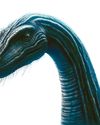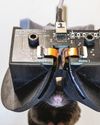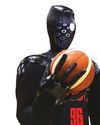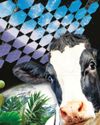
AIthough Earth is our familiar home, it is also a weird and wonderful place. And the more we learn about the bizarre creatures we share it with, the weirder and more wondrous it becomes.
Are there really spiders who cook their own supper? Marine animals with exploding backsides? Caterpillars disguised as poo, or beetles that look like mini JCBS? Amazingly, the answer is yes.
Long and short of it
Let's start with those beetles. They are called giraffe weevils and live only in Madagascar (where, by the way, many of the local animals, including lemurs, have evolved to look unlike anything else on the planet). Scientists know of more than 400,000 species of beetle so far a staggering number, yet none of the others have necks quite like these red and black beauties. In male giraffe weevils, their jointed necks stretch so far that their tiny heads are four times taller than the rest of their bodies. You can see how they got their name, but what are those magnificent necks for? The answer is fighting. Rival male weevils neck-wrestle to impress females and win the chance to mate. By a curious coincidence, actual giraffes do the same thing! What about female weevils? Their necks are far shorter and they use them for rolling leaves to make their nests.
Other animals use their body parts to help them adapt to their environment. Russia's saiga antelope has a nose so huge and droopy, it is almost a trunk. It looks a bit odd, but is ideal for life in dusty plains, since it filters dirt from the air. The antelope's massive hooter also heats up incoming air when it is cold, and helps cool air when it is hot, ensuring that the animal is always comfortable.
One of a kind
In every habitat, there are animals with adaptations that at first seem peculiar, but which actually make complete sense.
この記事は The Week Junior Science+Nature UK の Issue 67 版に掲載されています。
7 日間の Magzter GOLD 無料トライアルを開始して、何千もの厳選されたプレミアム ストーリー、9,000 以上の雑誌や新聞にアクセスしてください。
すでに購読者です ? サインイン
この記事は The Week Junior Science+Nature UK の Issue 67 版に掲載されています。
7 日間の Magzter GOLD 無料トライアルを開始して、何千もの厳選されたプレミアム ストーリー、9,000 以上の雑誌や新聞にアクセスしてください。
すでに購読者です? サインイン

WE COULD BE HEROES
Meet the young people just like you who are doing amazing things to help save the world.

Space probe "touches" the Sun
NASA's Parker Solar Probe made history on 24 December 2024 with the closest-ever approach to the Sun.

Asel Sartbaeva
Meet the researcher whose work will save lives around the world.

Loch Ness Monster
Can new studies of Loch Ness finally unlock the secrets of Nessie?

Pangolin preservation
Meet the puppy protectors helping to save a threatened animal.

Mice wear VR goggles
Scientists at Cornell University in the US have built virtual reality (VR) goggles for mice.

10-year-old wins award
A woman who had bowel cancer is now cancer-free after receiving a liver transplant.

A life-saving liver transplant
A woman who had bowel cancer is now cancer-free after receiving a liver transplant.

Robot shoots hoops
A robot designed by Toyota Motor Corporation in Japan has broken the world record for the longest basketball shot by a humanoid robot.

SCIENCE SAVES THE WORLD
Space umbrellas, green sand and garlic milk... Isabel Thomas explores the boldest ideas and wackiest ways to fight climate change and fix the planet.